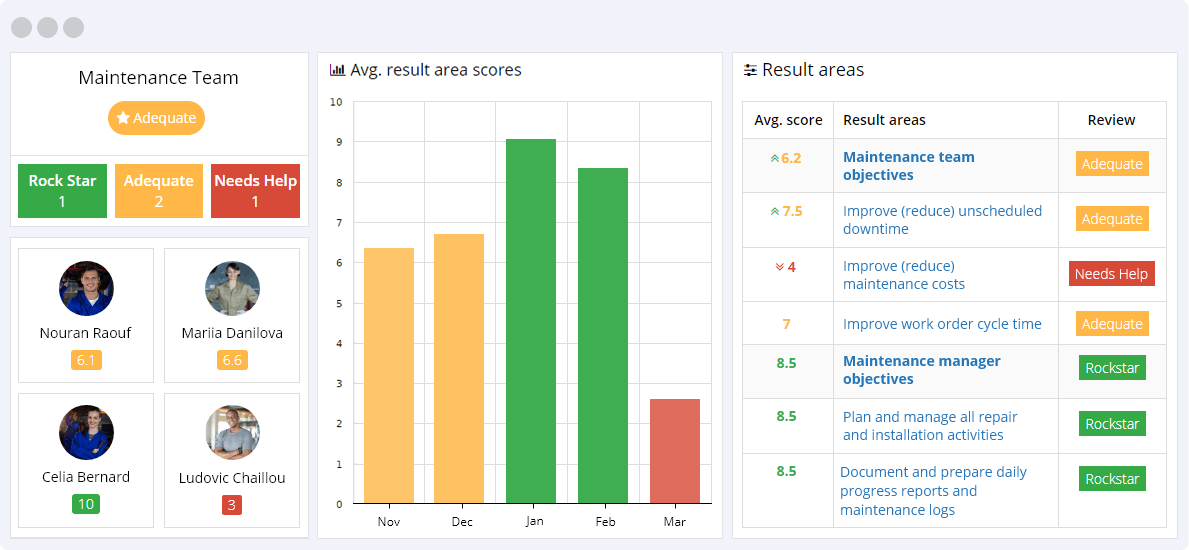These maintenance KPIs are an integral part of ensuring that the maintenance employee, team, and manager meet their key organizational efficiencies. The successful implementation of the maintenance strategy plays an indispensable role in ensuring that its machinery and equipment are kept in optimal condition over time. As a result, measuring these objectives is key to organizational success. They focus on tracking metrics grouped in three result areas: maintenance employee, team, and manager.
It is necessary to track and measure these KPIs over time because they offer insight into the maintenance department’s efficiencies and where improvements are needed. Metrics like reducing unscheduled downtime, managing the budget, tracking expenses, reducing the maintenance response time, and preparing progress reports are integral to ensuring operational success for the whole organization.
Implementing maintenance objectives for the maintenance team, employee, and manager drives the need to ensure consistency over time. High-performing metrics are valued, translating into an effective maintenance strategy and application by the maintenance team. Juxtapositionally, low-performing metrics must be revisited as they indicate poor performance and detract from operational and organizational success metrics.
